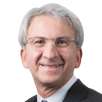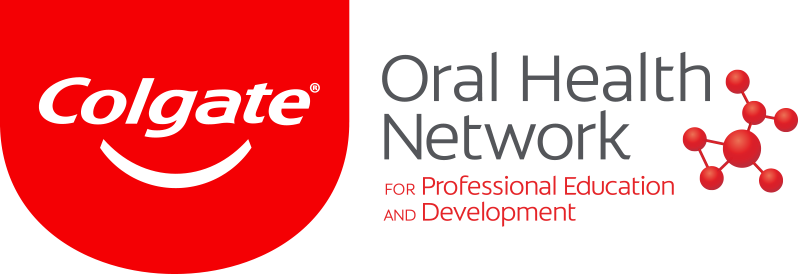CHICAGO, US: New research from the American Dental Association (ADA) shows that the model of dental practice in the country is continuing to change. The number of dentists who are affiliated with dental service organisations (DSOs) is increasing, and dentists in solo practice are becoming rarer. Crucially, dentists who are in the early stages of their careers are increasingly opting to join larger corporate clinics.
ADA data shows that the number of US dentists affiliated with a DSO increased from 10.4% in 2019 to 13.0% in 2022. In 2017, 8.8% of dental practitioners in the country were affiliated with a corporate entity that managed certain aspects of their dental practices.
Dr Marko Vujicic, chief economist and vice president of the ADA Health Policy Institute (HPI), shared the new 2022 data in an online recording, stating that the ongoing shift in practice modality was one of the key trends that HPI was tracking. He said that the data showed clearly that dentists in more advanced stages of their careers were more likely to be practising in smaller clinics that were not affiliated with a DSO. “This is a conclusion we have been publishing extensively about for several years,” Dr Vujicic commented, adding that the data consistently showed a generational shift in what was considered to be a typical dental practice model.
Broken down by career stage, DSO affiliation was found among 23% of dentists who graduated from dental school within the last ten years and among 11% of dentists who completed their dental studies between 11 and 25 years ago. DSO affiliation among dentists who graduated more than 25 years ago was just 7%. Nevada was the state with the highest rate of overall DSO affiliation, at 23%, followed by Arizona, Colorado and Texas, which each had 21%.
The data showed that 17% of early-career dentists were in solo practice. This was less than half of the number of mid-career dentists who were in solo practice, which stood at 38%, and substantially less than the rate of solo practice among dentists with more than 25 years of work experience, which stood at 50%.
Nearly one quarter of early-career dentists were practising dentistry in clinics that had at least ten locations, and 16% of them worked at clinics with more than 100 locations. Among mid-career dentists, 11% worked at clinics with more than ten locations and 8% worked at clinics with more than 100 locations. Just 8% of dentists in the more advanced stage of their careers worked at clinics with more than ten locations, and only 5% of them worked at clinics with more than 100 locations.
“Our updated data show higher rates of dentist affiliation with DSOs, fewer dentists in solo practice and more in group practice, compared with earlier releases of these data,” Dr Vujicic concluded. He said that the changes were taking place much more rapidly in some US states.
HPI is currently conducting research on other factors related to dental practice modality, such as career satisfaction, income, work–life balance and patient outcomes, as well as the role of private equity in dental practice consolidation.
Tags:
Dental market consolidation in the US is triggering high demand for clinics and some owners are taking advantage of equity arbitrage in order to make sales ...
ORANGE, Calif., US: Western Dental announced in May that it had entered into a definitive agreement to purchase fellow dental service organisation (DSO) ...
CHICAGO, US: The annual inflation rate for dental services has dipped well below the rate of overall inflation in the US. This key development reverses a ...
CHICAGO, US: The US Bureau of Labor Statistics began tracking the consumer price index back in 1995. Now, over two decades later, the government agency has...
Live webinar
Mon. 29 April 2024
12:30 PM EST (New York)
Prof. Roland Frankenberger Univ.-Prof. Dr. med. dent.
Live webinar
Tue. 30 April 2024
1:00 PM EST (New York)
Live webinar
Fri. 3 May 2024
1:00 PM EST (New York)
Live webinar
Tue. 7 May 2024
8:00 PM EST (New York)
Live webinar
Thu. 9 May 2024
8:00 PM EST (New York)
Live webinar
Mon. 13 May 2024
9:00 AM EST (New York)
Live webinar
Mon. 13 May 2024
1:00 PM EST (New York)
Doc. MUDr. Eva Kovaľová PhD.



 Austria / Österreich
Austria / Österreich
 Bosnia and Herzegovina / Босна и Херцеговина
Bosnia and Herzegovina / Босна и Херцеговина
 Bulgaria / България
Bulgaria / България
 Croatia / Hrvatska
Croatia / Hrvatska
 Czech Republic & Slovakia / Česká republika & Slovensko
Czech Republic & Slovakia / Česká republika & Slovensko
 France / France
France / France
 Germany / Deutschland
Germany / Deutschland
 Greece / ΕΛΛΑΔΑ
Greece / ΕΛΛΑΔΑ
 Italy / Italia
Italy / Italia
 Netherlands / Nederland
Netherlands / Nederland
 Nordic / Nordic
Nordic / Nordic
 Poland / Polska
Poland / Polska
 Portugal / Portugal
Portugal / Portugal
 Romania & Moldova / România & Moldova
Romania & Moldova / România & Moldova
 Slovenia / Slovenija
Slovenia / Slovenija
 Serbia & Montenegro / Србија и Црна Гора
Serbia & Montenegro / Србија и Црна Гора
 Spain / España
Spain / España
 Switzerland / Schweiz
Switzerland / Schweiz
 Turkey / Türkiye
Turkey / Türkiye
 UK & Ireland / UK & Ireland
UK & Ireland / UK & Ireland
 International / International
International / International
 Brazil / Brasil
Brazil / Brasil
 Canada / Canada
Canada / Canada
 Latin America / Latinoamérica
Latin America / Latinoamérica
 China / 中国
China / 中国
 India / भारत गणराज्य
India / भारत गणराज्य
 Japan / 日本
Japan / 日本
 Pakistan / Pākistān
Pakistan / Pākistān
 Vietnam / Việt Nam
Vietnam / Việt Nam
 ASEAN / ASEAN
ASEAN / ASEAN
 Israel / מְדִינַת יִשְׂרָאֵל
Israel / מְדִינַת יִשְׂרָאֵל
 Algeria, Morocco & Tunisia / الجزائر والمغرب وتونس
Algeria, Morocco & Tunisia / الجزائر والمغرب وتونس
 Middle East / Middle East
Middle East / Middle East
:sharpen(level=0):output(format=jpeg)/up/dt/2024/04/Envista-names-Paul-Keel-new-CEO-1.jpg)
:sharpen(level=0):output(format=jpeg)/up/dt/2024/02/vVARDIS_article_1920x1080px.jpg)
:sharpen(level=0):output(format=jpeg)/up/dt/2024/04/Study-links-e-cigarette-use-with-increased-risk-of-heart-failure.jpg)
:sharpen(level=0):output(format=jpeg)/up/dt/2024/04/web_FDC_small.jpg)
:sharpen(level=0):output(format=jpeg)/up/dt/2024/04/web_Bassi.jpg)








:sharpen(level=0):output(format=png)/up/dt/2023/11/Patent%E2%84%A2-Implants-_-Zircon-Medical.png)
:sharpen(level=0):output(format=png)/up/dt/2021/02/logo-gc-int.png)
:sharpen(level=0):output(format=png)/up/dt/2014/02/Du%CC%88rr_Dental.png)
:sharpen(level=0):output(format=png)/up/dt/2023/07/DirectaDentalGroup_Logo_2023_03_2lines_lowres.png)
:sharpen(level=0):output(format=png)/up/dt/2014/02/3shape.png)
:sharpen(level=0):output(format=png)/up/dt/2024/01/ClearCorrect_Logo_Grey_01-2024.png)
:sharpen(level=0):output(format=jpeg)/up/dt/e-papers/330729/1.jpg)
:sharpen(level=0):output(format=jpeg)/up/dt/e-papers/330727/1.jpg)
:sharpen(level=0):output(format=jpeg)/up/dt/e-papers/330725/1.jpg)
:sharpen(level=0):output(format=jpeg)/up/dt/e-papers/325039/1.jpg)
:sharpen(level=0):output(format=jpeg)/up/dt/e-papers/325007/1.jpg)
:sharpen(level=0):output(format=jpeg)/up/dt/e-papers/313543/1.jpg)
:sharpen(level=0):output(format=jpeg)/up/dt/2023/06/Young-US-dentists-more-likely-to-practise-in-groups.jpg)

:sharpen(level=0):output(format=jpeg)/up/dt/2024/04/Envista-names-Paul-Keel-new-CEO-1.jpg)
:sharpen(level=0):output(format=gif)/wp-content/themes/dt/images/dt-user.gif)
:sharpen(level=0):output(format=jpeg)/up/dt/2022/06/Selling-up-for-millions-equity-arbitrage-is-increasing-the-wealth-of-US-dentists-but-not-for-long_3.jpg)
:sharpen(level=0):output(format=jpeg)/up/dt/2022/05/Western-Dental-to-acquire-Mid-Atlantic-Dental-Partners-and-form-super-DSO.jpg)
:sharpen(level=0):output(format=jpeg)/up/dt/2022/10/Lagging-inflation-rate-for-US-dental-services-squeezing-clinic-profits-and-dentist-incomes-.jpg)
:sharpen(level=0):output(format=jpeg)/up/dt/2022/07/Inflation-in-the-US.jpg)






:sharpen(level=0):output(format=jpeg)/up/dt/2024/04/Envista-names-Paul-Keel-new-CEO-1.jpg)
:sharpen(level=0):output(format=jpeg)/up/dt/2024/02/vVARDIS_article_1920x1080px.jpg)
:sharpen(level=0):output(format=jpeg)/up/dt/2024/04/Study-links-e-cigarette-use-with-increased-risk-of-heart-failure.jpg)
:sharpen(level=0):output(format=jpeg)/up/dt/e-papers/330727/1.jpg)
:sharpen(level=0):output(format=jpeg)/up/dt/e-papers/330725/1.jpg)
:sharpen(level=0):output(format=jpeg)/up/dt/e-papers/325039/1.jpg)
:sharpen(level=0):output(format=jpeg)/up/dt/e-papers/325007/1.jpg)
:sharpen(level=0):output(format=jpeg)/up/dt/e-papers/313543/1.jpg)
:sharpen(level=0):output(format=jpeg)/up/dt/e-papers/330729/1.jpg)
:sharpen(level=0):output(format=jpeg)/up/dt/e-papers/330729/2.jpg)
:sharpen(level=0):output(format=jpeg)/wp-content/themes/dt/images/3dprinting-banner.jpg)
:sharpen(level=0):output(format=jpeg)/wp-content/themes/dt/images/aligners-banner.jpg)
:sharpen(level=0):output(format=jpeg)/wp-content/themes/dt/images/covid-banner.jpg)
:sharpen(level=0):output(format=jpeg)/wp-content/themes/dt/images/roots-banner-2024.jpg)
To post a reply please login or register